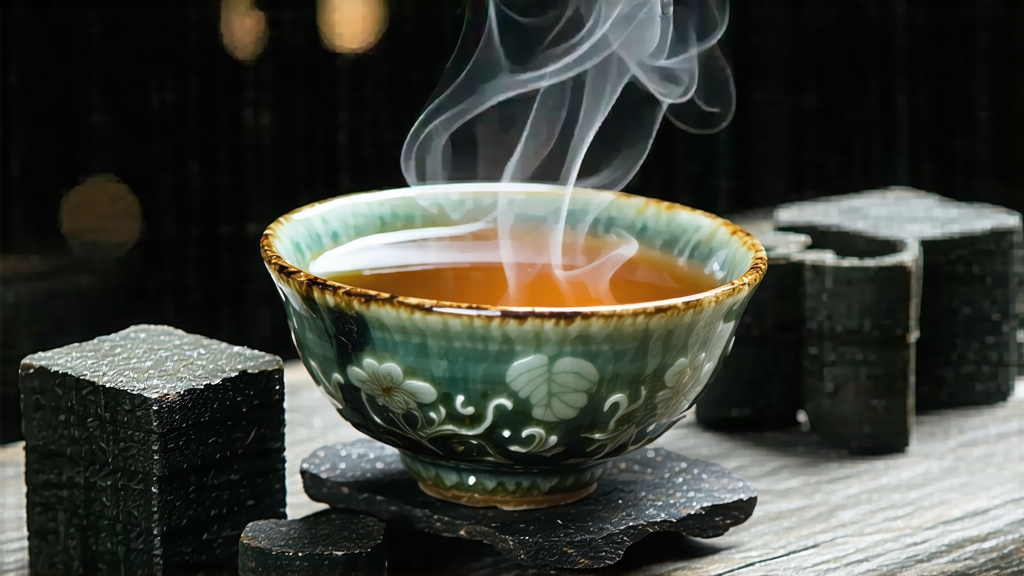
Tucked away in the humid mountains of southern Guangxi, Liu Bao tea has spent four centuries quietly transforming itself from a coolie’s thirst-quencher into one of the most intriguing dark teas on earth. While Pu-erh grabs the international spotlight, Liu Bao—literally “Six Forts,” named after the six stockades that once guarded the trade route to Guangdong—remains a well-kept secret among Chinese tea insiders. Its leaves, large and leathery from the Yunnan-large-leaf varietal transplanted centuries ago, travel through a cycle of fire, steam, damp earth, and time, emerging with a flavor that recalls dark honey, betel nut, and the faintest whisper of camphor. To understand Liu Bao is to watch history ferment in a bamboo basket.
Historical footprints
The earliest written record appears in the 1686 gazetteer of Cangwu County, where magistrate Lu Tingxu praised the tea for “curing dampness and relieving summer heat” among boatmen hauling rice down the Xun River. By the late Qing, Liu Bao dominated the “tea boat road”: 50-ton wooden junks carried compressed baskets from Wuzhou to Guangzhou, then on to Hong Kong and Southeast Asia. Coolies in Malaya’s tin mines received part of their wages in Liu Bao; the tea’s mild caffeine and microbial profile settled stomachs soured by rice wine and tinned beef. When the British imposed a tea tax on the Straits Settlements, Liu Bao was smuggled in under layers of dried tangerine peel, its aroma masking the contraband from customs dogs. Thus a humble mountain tea became currency, medicine, and memory for an entire diaspora.
From leaf to dark gold
Liu Bao belongs to the “hou fā xiāo” (post-fermentation) family, yet its microbiology is distinct from Pu-erh’s. The journey begins in late April, when pickers take one bud with three or four leaves from 80-year-old bushes growing at 300–600 m among camphor and eucalyptus. The leaves are briefly wilted under mountain shade, then wok-fried at 200 °C for eight minutes—long enough to kill green enzymes but preserve leaf integrity. Rolling follows, a 30-minute dance that bruises cell walls without breaking them, encouraging the first oxidative blush. What happens next defines Liu Bao: the “duī wēn” (wet-pile) fermentation. The leaves are piled 70 cm high on bamboo mats, sprayed with mineral-rich spring water, and covered with jute sacks. For 10–18 days the pile hovers at 55 °C, turned twice daily to invite a consortium of Aspergillus niger, Blastobotrys adeninivorans, and local yeasts. The result is a leaf that has turned chestnut-brown, its astringency replaced by a deep, woody sweetness.
Basket aging, the second life
Unlike Pu-erh cakes, Liu Bao is packed while still warm into 40 kg bamboo baskets woven in the village of Shuangtou. The bamboo is green, its inner membrane intact, imparting a subtle green-bean note during the slow boat ride to humid warehouses in Wuzhou or Hong Kong. There the baskets are stacked seven high, allowing residual moisture to migrate downward. For the first three years the tea breathes aggressively, exhaling hay-like aromas; by year five the liquor turns garnet and a camphor-cool sensation appears at the back of the throat. Connoisseurs seek the 1980s “export grade” marked with a red-crested crane—those baskets spent decades in pre-air-conditioned Hong Kong godowns, absorbing maritime notes that now read as dried seaweed and salted plum.
Tasting the decades
To judge Liu Bao is to listen to time. Begin by warming a small 120 ml Yixing pot with 95 °C water. Break 6 g of loose leaf from the basket’s edge—never the core, where compression is too tight—allowing the clay to cradle the fragments like dark jewels. The first 10-second rinse awakens spores dormant since the last monsoon; discard it, but inhale the lid: you should catch wet bark, lychee shell, and something metallic, like a rain-sown penny. The second infusion, 15 seconds, delivers a liquor the color